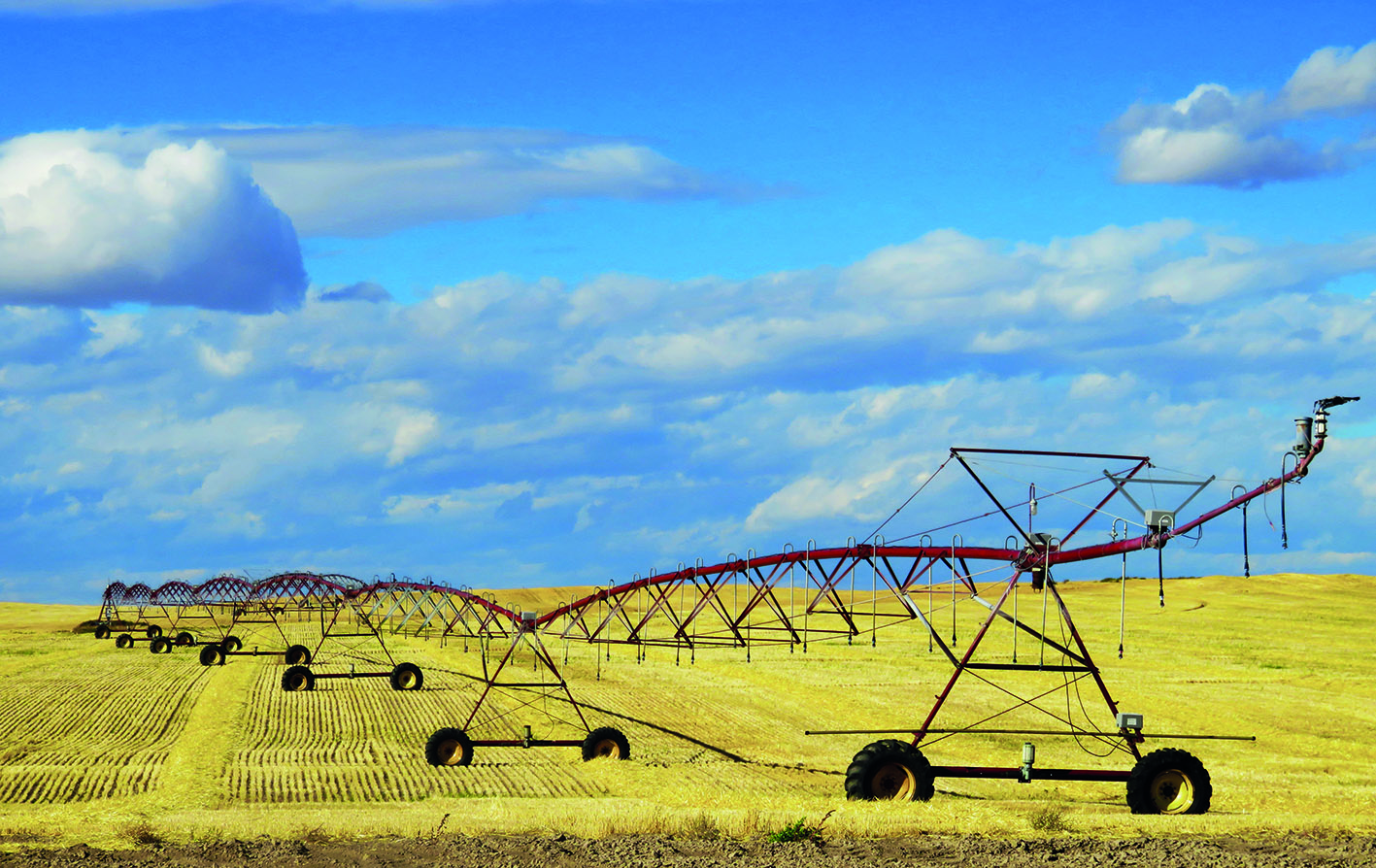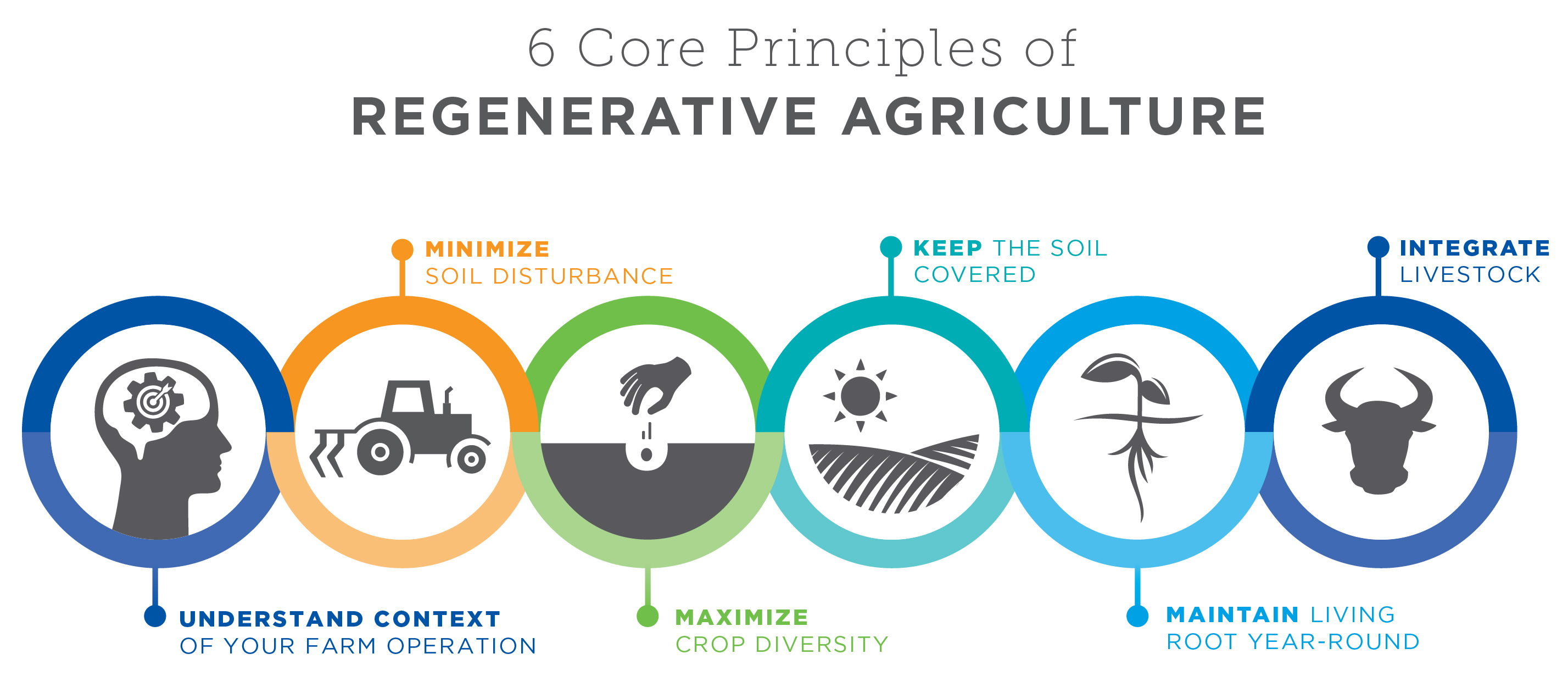Depleted Soil
Regenerative Agriculture to the Rescue

"When we try to pick out anything by itself, we find it hitched to everything else in the Universe", said John Muir, one of the first modern naturalists. Life on Earth is the result of a harmony between countless fascinating natural processes operating as ecosystems. In recent decades, the world has believed, in an illusion of man's omnipotence, that it could exonerate itself from its close and consubstantial relationship with nature. Over time, the green revolution has shown its flaws and lack of sustainability. Today, the food system needs to be redesigned to respond to the environmental crisis. How? Through regenerative methods, take care of soils, and reconcile nature and food production.
Regenerative agriculture, what exactly is it about?
First and foremost, regenerative agriculture is the preservation or revitalisation of soil fertility. And this is very necessary because rich soils are essential to grow healthy food and prevent droughts or floods. Above all, soils are a key ally in the reduction and adaptation to climate change. Discreetly, they sequester an astronomical amount of CO2, preventing it from escaping into our atmosphere. These are little-known facts, but soils are home to a quarter of the world's biological diversity and sequester more CO2 than the earth's vegetation and atmosphere combined. 1,417 petatons, or 1,417,1015 tonnes, according to FAO. And that is only in the first metre of soil depth!
Unfortunately, current practices based on linear land use management, deforestation, compaction and pressure on resources are leading to erosion and critical depletion of nutrients in the land. The same is true for extensive cultivation, eradication of organic matter, intensive irrigation with poor quality water and overuse of inputs, which also result in a drastic loss of soil fertility, pollution and deterioration. In 2018, FAO announced that nearly a third of the world's soils are degraded by intensive agriculture. And once a critical threshold is reached, soils are no longer able to provide anything at all: neither food, nor carbon capture, nor income for farmers, nor ecosystem services. For regenerative agriculture, which places soil health at the forefront, out of the question!
Regenerative agriculture also endeavours to preserve water resources. Having fresh and salubrious water is a prerequisite to ensure a healthy and nutritional agricultural production. Despite this, water is currently too often mismanaged. As a result, blue gold is becoming scarce. In recent years, agricultural regions around the world have been subject to increasing water stress. Already in 2007, the FAO warned that "if current consumption patterns persist, two-thirds of the world's population could live in water-stressed countries by 2025". And although it suffers from the situation, conventional agriculture itself contributes to it since it accounts for 70% of all water withdrawals in the world and, at the same time, is one of its main sources of pollution. The sector therefore has a central role to play in improving the use of water and achieving a reasoned and reasonable use of this essential resource. This is what regenerative methods intend to do.

Water Stress - Agriculture accounts for 70 % of water withdrawals in the world.
The combination of vegetable or arboricultural crops with livestock, organic or sustainable agriculture, permaculture, agroforestry, aquaculture... a wide variety of methods based on different concepts come together under the name of regenerative agriculture. But no matter how diversified they may be, what counts is the production of healthy food for humans and the planet thanks to the adaptation of practices to the climate, to individuals and to available resources, without forgetting the enhancement of ecosystems and cycles of renewal.
Although some people call it a radically different form of farming, regenerative agriculture is, in fact, the result of updated and improved pre-industrial farming methods, thanks to numerous experiments and the sharing of practices and knowledge about soil, water, biodiversity and the many, often ignored, interactions that exist in nature.
Smallholders as well as large-scale producers can be part of the dynamic, as regenerative agriculture is a concept that can be adapted to different practices, which allows it to adapt to the scale, as well as to the geographical and social contexts of the cultivated land. And, since creativity is the limit, precursors of the movement are present in every corner of the globe with approaches that are each more exciting than the last.
In India, for example, Satya, a farmer in India's West Godavari district, saw many neighbouring farms destroyed by a powerful storm in 2017, while his 2.4 hectare plantation came out virtually unscathed. His secret? A chemical-free, regenerative agriculture approach: the "zero budget natural farming" (ZBNF). In 2018, there were about 160,000 farmers like Satya in the district. By 2024, the government of Andhra Pradesh plans to have 6 million producers engaged in this transition.
On the other side of the world, in Argentina, Doug Tompkins has developed the Laguna Blanca, a 2,833 hectare farm, that has the distinctive feature of conserving large blocks of wilderness between its fields to take advantage of the ecosystem services of the savannah and marshes. Also, the farm is characterised by diversified crops, ranging from grains to peas, as well as numerous nuts and fruits.

Regenerative agriculture, the basis of the future food system?
Numerous observations make it possible to envisage these approaches to meet the needs of agricultural transition both in terms of productivity and limitation of its climatic and environmental impacts.
Farms that focus on ecosystem health have seen their yields increase year after year. Leontino Balbo's farm in Brazil, for example, benefited from a 20% increase in sugar cane yield. In India, thousands of farms, such as Satya's, based on "zero budget natural farming", recorded an average increase of 36% in peanut production. Takao Furuno's integrated model of raising ducks in rice fields has led to a 20% increase in rice yield and a tripling of income. These few examples are part of a rapidly growing data set that proves that regenerative approaches can produce enough food while ensuring high-profit margins and practices in harmony with nature. Taking a systemic view leads to multiple assets to move towards greater resilience.
Ways of hope are thus emerging for a transition of the food system on a global scale. To achieve this, it is necessary to begin the transition today because the implementation of regenerative agricultural practices does not happen overnight: nature moves at its own pace and cannot be rushed.
On a small-scale, the transition from a conventional system to a regenerative system can be done quickly and without too much investment. On the other hand, on a large-scale, the changeover may take much longer and create periods of economic uncertainty in an already low-margin industry.
The reduction of the financial risks associated with transition periods in the agricultural sector is an aspect in which public authorities have a role to play through subsidies, investments or insurance for farmers. For these interventions to be sustainable, effective monitoring methods still need to be established.
For the private sector, this transition represents real untapped potential. New opportunities exist in medium and long-term investments, in the development of new technologies and new products that make it easier for farmers to practise regenerative agriculture.
And the commitment of companies does not end with the food sector. More and more, attentive and inventive brands are finding ways to make their contribution. Timberland, for example, has chosen to make a commitment by sourcing leather from regenerative methods. This announcement is part of the brand's new strategy based on three pillars: better products, a stronger community and a greener world. The strength of regenerative farming is that it fits perfectly within the three pillars. At the same time, the American company decided to invest in a fund to spread good practices and the many advantages of regenerative agriculture, especially in the fashion world, which is increasingly exposed to criticism.
Other brands are moving forward with the same vision, such as Patagonia. The outdoor clothing and equipment company continues to surprise and think outside the box by committing to sustainable food through Patagonia Provisions and various initiatives to support regenerative agriculture. The founder of the activist brand talks about this new turning point as follows: "I have always thought my company as an experiment: making decisions based on quality and responsibility. And I can tell you that (for clothing) it is not an experiment any more. I've proven to myself it works. Now, applying that to food is a another story, another experiment. But I think it is probably the most important experiment we have ever tried."
At home, too?
Associated with the circular economy, a real lever for economic diversification and transition, a national project for the development of regenerative agriculture is perfectly in line with Luxembourg's desire to move forward in its Third Industrial Revolution (TIR) strategy. To do so, the country will have to understand the issues and, above all, the enormous potential of this concept, which has multiple but crucial aspects for food resilience and sustainable development. Also, at the social and societal level, support for regenerative agriculture represents a multidimensional lever to create opportunities for improved wellbeing and professional development within the agricultural sector.
In an encouraging sign at the European level, on May 20, the European Commission unveiled ambitious new strategies for investing in biodiversity and food as part of its "Green Deal" with the aim of protecting 30% of the EU's land and seas and reducing pesticide use by 50% (the European Green Deal - COM/2019/640 final). According to the Commission Vice-President, Frans Timmermans, "the coronavirus crisis has shown how vulnerable we all are, and how important it is to restore the balance between human activity and nature". Europe is thus talking about putting biodiversity on the road to "recovery".
There is no doubt that regenerative agriculture has a bright future ahead of it, and it brings encouraging prospects for imagining an agricultural transition. But there is still a long way to go, while the time and resources available are dwindling. To speed up the pace, consumer's choice is key. After all, food is everyone's business. So soon, it will be up to each and every one of us to take responsibility and choose... what food for tomorrow?





